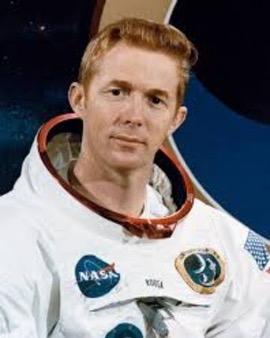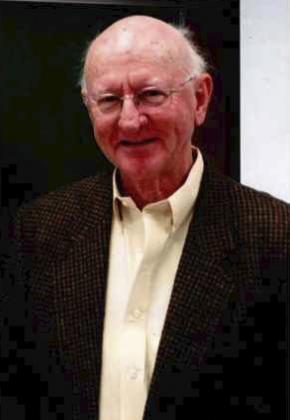Dayton Acquires Half-Moon Tree
Dayton is the recent recipient of a 2nd generation Moon Tree, often called a half-moon tree. Ann Jamison, a former resident of Dayton who grew up there, and who is the daughter of Bob and Mary Beth Jamison, contacted Mayor Caroline Wadzeck in November 2021 about the tree being acquired for Dayton by Chris Roosa, son of astronaut Stuart Roosa who flew on the Apollo 14 mission that was launched on January 31, 1971.
The Roosa and Jamison Families were close friends who shared a weekend house located south of Dayton on 100 acres where they gathered often. This was a happy time for the Jamison and Roosa children who have great memories of being together and sharing “adventures.”
Chris’s father, astronaut Stuart Roosa, was chosen as part of the Apollo 14 team on what was to be the third trip to the lunar surface. Stu Roosa was born August 16, 1933 in Durango, Colorado. He worked for the Forst Service in the early 1950’s as a smoke jumper fighting fires and later joined the Air Force and became a test pilot.
Roosa was one of 19 people selected for the astronaut class of 1966 and was part of the astronaut support crew for Apollo 9. During the Apollo 14 mission, while Commander Alan Shepard and Lunar Module Pilot Edgar Mitchell explored the Fra Mauro region of the moon, Command Module Pilot Stu Roosa conducted observations, experiments, and scientific investigations in lunar orbit.
Packed in small containers in Roosa’s personal kit were hundreds of tree seeds – loblolly pine, sweet gum, redwood, Douglas fir, and sycamore, part of a joint NASA/United States Forest Service project. The seeds were flown as an experiment to determine the effects of deep space on them.
Upon return to Earth, the seeds were germinated by the Forest Service and became known as “Moon Trees”. Some 450 saplings were grown and gifted to schools, universities, parks, and government offices, many as part of the U.S. bicentennial celebrations in 1976. Locations were chosen, in part, to ensure proper climate conditions for the respective tree species and planted throughout the United States and the world.
Some trees were planted beside their Earth-grown counterparts. After decades of growth, no discernable differences can be found between the trees that grew from seeds that traveled to the Moon and those that never left Earth. The second-generation trees, grown from the “Moon Tree” seeds are also growing around the world.
Following Apollo 14, Roosa was backup command module pilot for Apollo's 16 and 17. He then worked on the Space Shuttle program until his retirement as a Colonel in the Air Force in 1976, the time when many of his trees were being planted.
Remembering happy times spent in Dayton, Chris wanted to get a tree for the community and worked hard to get it, drawing on his contacts with the Forest Service, Mississippi State University, and others. This tree in Dayton, a sycamore, is now on a listing of Moon Tree locations. It is small in height, standing at 6’ tall with part of that in the ground and is covered in leaves.
Dayton’s resident tree expert, Clayton Bracey, owner of Precision Lawns and Landscaping took charge of the tree last November and planted it in a strategic location on April 14 at the community center. “It’s a healthy tree. Sycamores are extremely hardy and can grow as tall as 60-70 feet tall. They’re native to the southern parts of the U.S. and have a fast growth rate: 1’-1.5’ per year depending upon the weather and environmental conditions.” Bracey said he has personally seen sycamores grow up to 2 feet per year.
Sadly, Stuart Roosa passed away in December 1994 and his friend Bob Jamison passed October 1, 2012. This Half-Moon Tree will stand as a tribute to their friendship of 50 years ago, while all of the Moon Trees are a living memorial to Stuart and the Apollo program.
Article written by Caroline Wadzeck from information given by Ann Jamison and from sources:
https://nssdc.gsfc.nasa.gov/planetary/lunar/moon_tree.html
https://www.nasa.gov/centers/marshall/history/moon-trees-stand-as-living...


